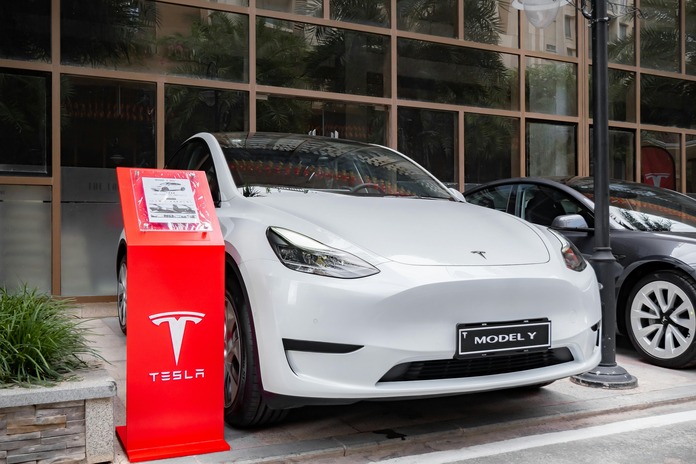Tesla’s (NASDAQ:TSLA) third-quarter (Q3) earnings report surprised many investors, pushing the stock higher despite some mixed results. The electric vehicle (EV) giant posted an adjusted earnings per share (EPS) of $0.72, significantly surpassing analysts’ expectations of $0.58. However, revenue came in slightly below the forecast at $25.18 billion, compared to the expected $25.37 billion.
Despite this, Tesla’s stock surged more than 14% in premarket trading, reflecting investor optimism. The spike can be attributed to the company’s positive outlook on production and delivery volumes, plans to launch a lower-cost EV, and improvements in Tesla’s Full Self-Driving (FSD) take rate. Let’s take a closer look at the key highlights from Tesla’s Q3 earnings report and what investors should consider going forward.
Key Takeaways from Tesla’s Q3 Earnings Report
Tesla reported total automotive revenue of $20.02 billion, showing growth both sequentially and year-over-year. This is particularly impressive considering the challenging automotive environment. Tesla delivered record Q3 vehicle volumes, driven by increased demand across all markets. The company implemented attractive financing incentives to boost demand, which led to reduced average selling prices (ASPs). Despite the lower ASPs, the strategy to increase sales volume while maintaining low inventory levels paid off.
Additionally, new features like the Full Self-Driving (FSD) for the Cybertruck and “Actually Smart Summon” technology generated $326 million in revenue. Tesla expects continued modest growth in vehicle deliveries through 2024.
Improved Margins, But Challenges Remain
One of the most positive takeaways from Tesla’s Q3 report is the improvement in automotive margins. Higher production and delivery volumes, combined with localized shipping, led to lower freight costs. Tesla also reduced its cost of goods sold (COGS) per vehicle to a record low of around $35,100. This, coupled with reduced raw material costs, helped push Tesla’s operating margin to 10.8%, a 323-basis-point improvement from the previous year.
However, the sustainability of these margins remains uncertain. While lower COGS and higher deliveries will support margins in the short term, Tesla’s strategy of offering price cuts and discounts to boost sales could strain profitability in the long run. Tesla has signaled that it may continue reducing vehicle prices to increase demand, which could pressure margins further in 2024.
Affordable EVs Are Coming by 2025
Tesla CEO Elon Musk confirmed during the earnings call that the company plans to launch a more affordable EV by the first half of 2025. This model is expected to drive significant growth, with vehicle deliveries projected to increase by 20% to 30% next year. However, despite the excitement around this new lower-cost EV, the overall EV market has been facing some softness, which could pose challenges for Tesla to meet these ambitious targets.
Energy Business Shows Promising Growth
While Tesla faces some uncertainty in the EV market, its energy storage business is thriving. In Q3, Tesla’s energy division posted a gross margin of 30.5%, a significant improvement despite lower Megapack volumes. Tesla’s Powerwall also saw record deployments for the second consecutive quarter. With energy storage and services becoming more profitable, Tesla expects this sector to contribute substantially to long-term profit growth. As Tesla expands its energy product offerings, its energy business is becoming a key pillar of future growth.
Conclusion: What Investors Should Consider
Tesla’s Q3 earnings report provides several positive developments for investors. The company has improved automotive margins, seen growth in its FSD take rate, and is preparing for the launch of a lower-cost EV in 2025. Furthermore, Tesla’s energy business continues to grow, offering a strong profit driver beyond its core automotive segment.
However, investors should remain cautious. Competitive pressures, price cuts, and potential regulatory challenges for the fully unsupervised FSD rollout could impact Tesla’s margins and profitability in the coming years. From a valuation perspective, Tesla’s stock remains expensive, trading at 84.8 times its projected 2025 earnings of $2.52 per share. As a result, Wall Street analysts remain split, with Tesla holding a “Hold” consensus rating.
Investors looking to capitalize on Tesla’s growth should weigh the company’s long-term potential against the near-term challenges it faces.
Featured Image: Pexels © Makara Heng









